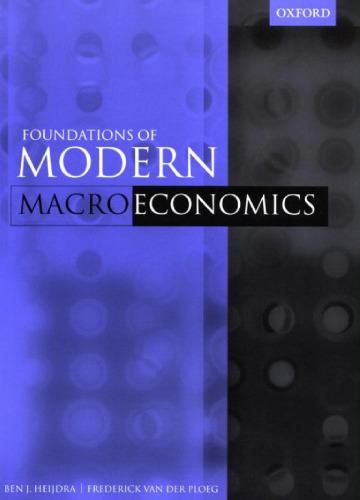The graphical interpretation is as follows. At point B the value of q is consistent with an
Question:
The graphical interpretation is as follows. At point B the value of q is consistent with an equilibrium investment plan. Now take a slightly higher value of q, say the one associated with point B', directly above point B. Clearly, in view of the fact that both r and FK are constant, this higher value of q can only satisfy the arbitrage equation (4.12) if a (shadow) capital gain is expected, i.e. if q > 0. The opposite holds at points below the q = 0 line (say point B', as is indicated with the arrows in Figure 4.1). Intuitively, therefore, the q-dynamics is inherently unstable. Slight moves away from the 0 line are not self-correcting but reinforcing.
By combining the information regarding the K-dynamics and q-dynamics, the forces operating on points in different regions of Figure 4.1 are obtained and summarized by the arrows. For example, at point B' there are automatic forces shifting the (q, K) combination in a north-easterly direction. In Figure 4.2, a number of representative trajectories have been drawn. Note especially what happens if a trajectory crosses through the K = 0 line. Take point A, for example. As it moves in a southeasterly direction, it gets closer and closer to the K = 0 line. As it reaches this line
(at point A'), however, the value of q keeps falling and the level of gross investment becomes too low to sustain the given capital stock. As a result, the trajectory veers off in a south-westerly direction towards point A" (never to be heard of again).
From the different trajectories that have been drawn in Figure 4.2, it can be judged that the model appears to be very unstable: all trajectories seem to lead away from the steady-state equilibrium point at Eo . There is, however, one path that does give rise to stable adjustment, namely the q = 0 line itself. Consider, for example, point C. It lies on the 4 = 0 line (so there are no forces operating to change the value of q over time), but it lies to the left of the K = 0 line. But, the K-dynamics is stable, so the capital stock will automatically rise towards its level at point E o . A similar conclusion holds for point C'.
A _ r e OOww stead!
a -
Liie model comb':
---inninecl at any 1-,-
"-*
:
.xf re-es - :1)1
Step by Step Answer:

Foundations Of Modern Macroeconomics
ISBN: 9781264857937
1st Edition
Authors: Ben J. Heijdra, Frederick Van Der Ploeg






